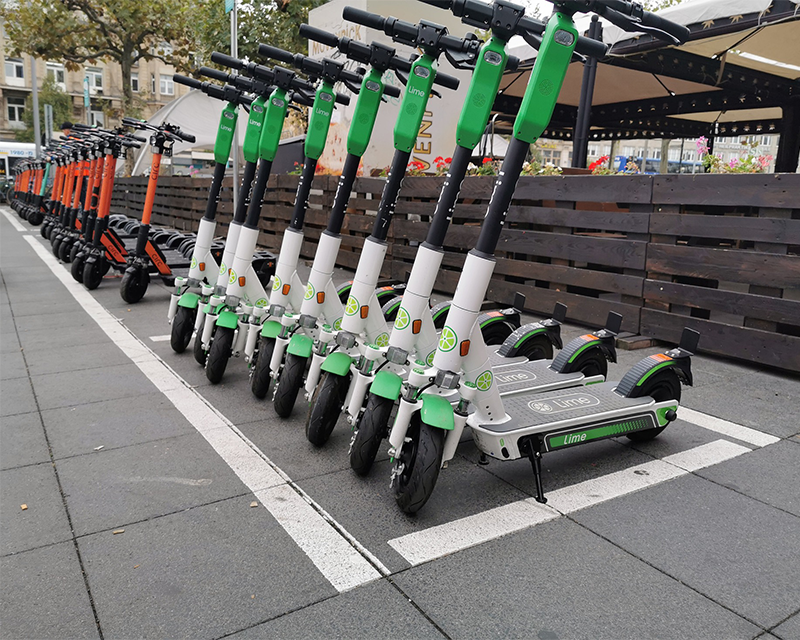Since 2018, an increasing number of South Koreans have chosen to employ the newest trend in personal mobility: electric scooters. Although they require a class two motorbike bicycle license, e-scooters have grown popular as a convenient alternative to traditional forms of transportation such as subways and public buses. Suitable for short distances, these efficient vehicles have attracted busy students and workers by easily allowing them to arrive to their destination on time. Furthermore, the rapid development in rental service apps for e-scooters have exposed more people to this one-person vehicle, a possible form of transportation that might be a common spectacle in the future.
“I suddenly realized that there are so many scooter riders,” said Kate Hyun (10), e-scooter user. “There are electric scooters on the streets people can rent, and I feel like this new type of transportation is very innovative. I saw many people downloading the scooter app for the first time and excitedly trying the new vehicle. Although this vehicle causes some casualties, it seems like a very convenient choice of transportation, especially to those who are struggling with traffic on their way to work.”
One major benefit of using electric scooters is that they allow their users to avoid the massive traffic in South Korea. Especially in the morning and the late afternoon, students and workers struggle to arrive at work or home on time with cars or public transportation. With e-scooters, however, they can go on the bicycle path without experiencing a traffic jam, which takes less time to reach their destination. Furthermore, this one-person vehicle saves transportation costs through its battery system; instead of paying for every ride, riders simply need to charge their vehicles.
“Sometimes, I have to wait over 30 minutes while waiting for a subway because they are always so full,” said Jennifer Shin (10), a frequent subway user. “I often have an unpleasant experience whenever I have to squeeze myself into the crowd. In those moments, I grow jealous toward e-scooter riders, who do not have to worry about packed subways or traffic. Because I heard that buying the one-person vehicle can be cheaper and more convenient in the long term, I am considering buying one.”
Despite e-scooters’ attractive qualities, these vehicles do possess some risks and disadvantages. Although e-scooters require a license, there are a lack of regulations and safety enforcements regarding where users can ride these vehicles. Hence, people frequently collide with riders on the pedestrian walkway, which increases the number of accidents. Furthermore, a majority of riders have become used to such misconduct, being unaware of the present laws. As a result, more people are asking for the stricter implementation of policies that can encourage the safety of e-scooter riders and pedestrians.
“Electric scooters are basically motorcycles,” said Ashley Seong (10), opponent of electric scooters. “The riders are not only posing danger to the pedestrians but also themselves. Since they are not moving at the same speed of the pedestrians, it is difficult for cars to see them, especially when they are crossing the streets, which might lead to terrible accidents.”

